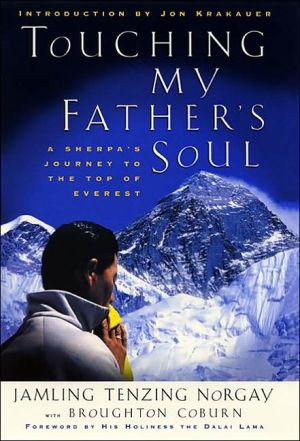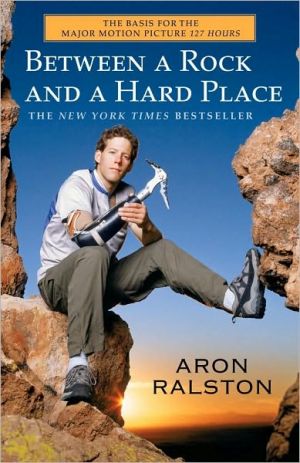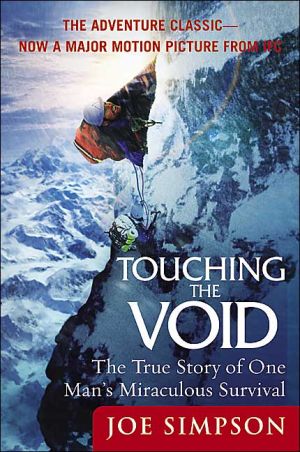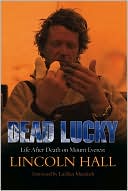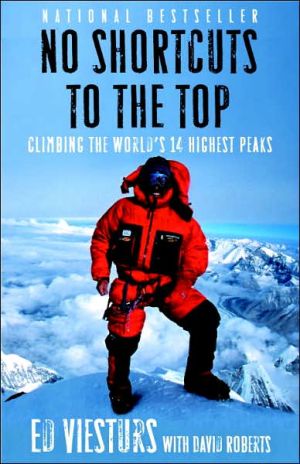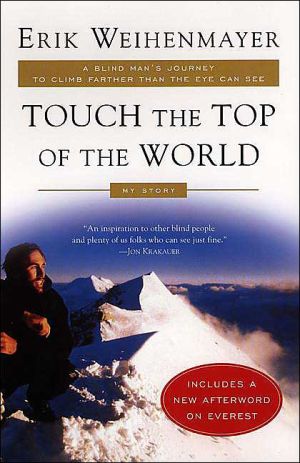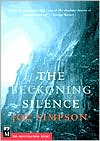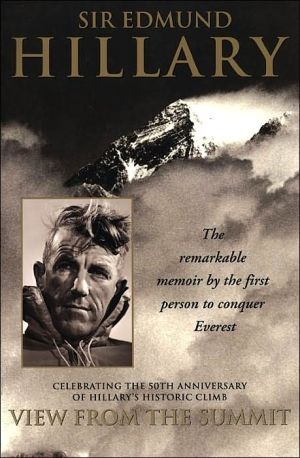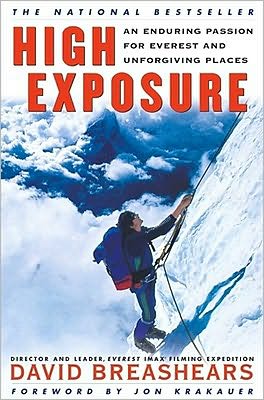Touching My Father's Soul: A Sherpa's Journey to the Top of Everest
In a story of Everest unlike any told before, Jamling Tenzing Norgay gives us an insider's view of the Sherpa world. As Climbing Leader of the famed 1996 Everest IMAX expedition led by David Breashears, Jamling Norgay was able to follow in the footsteps of his legendary mountaineer father, Tenzing Norgay, who with Sir Edmund Hillary was the first to reach the summit of Mount Everest, in 1953. Jamling Norgay interweaves the story of his own ascent during the infamous May 1996 Mount Everest...
Search in google:
The Great Untold Story of Everest Sherpas are part of our everyday parlance, yet we know so little of their world beyond their depiction as climbing wonders. In Touching My Father's Soul, Jamling Tenzing Norgay gives us an insider's view of the Sherpa world as he tells a story of Everest unlike any told before. His tale is one of profound adventure that entwines the lives of a family, a mountain, and a people. As Climbing Leader of the famed 1996 Everest IMAX expedition led by David Breashears, Jamling Norgay was able to follow in the footsteps of his legendary mountaineer father, Tenzing Norgay Sherpa, who with Sir Edmund Hillary was the first to reach the summit of Mount Everest in 1953. While Jamling's father was the pioneer and most famous climber in the family, a total of twelve relatives have successfully summitted the mountain the Sherpas call Chomolungma, for the goddess who lives on the summit. In the Sherpa tradition and in the Norgay family, climbing Everest and living in its shadow have a very different meaning than the "men conquering mountains" attitude that prevails in many Western accounts. Jamling Norgay interweaves the story of his own ascent during the infamous 1996 Mount Everest disaster with little-known stories from his father's historic climb. While the world celebrated Tenzing Norgay for his achievement, his son was deeply under his spell and inexorably drawn to the mountain his father loved. The journeys of both Jamling and his father began with ominous signs, telling divinations, ritual offerings, and humble prayers. Along the way both father and son grappled with the same physical and personal challenges as they pressed on against extreme circumstances. Jamling carried with him the fundamental mountaineering lesson learned from his father: Everest "must be approached with respect and with love, the way a child climbs into the lap of its mother. Anyone who attacks the peak with aggression, as a soldier doing battle, will lose." Touching My Father's Soul is the first modern account of the Everest experience from the unheard voice of its indigenous people, revealing a fascinating and profound world that few--even many who have made it to the top--have ever seen. Outside Magazine Touching My Father's Soul rises above the bumper crop of books on Everest's tragic 1996 season.
Chapter One\ \ \ \ An Ominous Forecast\ \ \ \ Rimpoche bunched his mala rosary into his cupped hands and blew on it sharply. He withdrew the string of beads slowly and inspected it, turning his head slightly and squinting, as if trying to peer inside each individual bead. He looked up at me.\ "Conditions do not look favorable. There is something malevolent about the mountain this coming season. "\ I felt as if I had been punched in the stomach — a feeling that surprised me considering that I was nothing of a devout Buddhist.\ Rimpoche sat on a wide, flat cushion, and he adjusted his robe and began to rock back and forth as if he, too, had been surprised by the divination. He clapped his hand loudly to call the attendant monk. His clap broke the silence the way a guru's clap in a Buddhist teaching is meant to trigger awakening to the nature of emptiness, sparking a flash of recognition that all life is impermanent, containing no inherent existence. I experienced a narrow, momentary space of calmness, a millisecond of emptiness, then felt my stomach again.\ A monk padded in quietly and served us tea, gently lifting the filigree silver cover from Rimpoche's jade teacup, which sat on a silver stand. The monk then offered me some fried breads from a woven bamboo tray. I declined, then accepted after the third offer. Such trays are always kept heaping full, and I had to concentrate to avoid knocking off the other pieces. My hand was shaking.\ In early January 1996, 1 had traveled here to Siliguri, West Bengal, for an audience with Chatral Rimpoche, a respected but reclusive lama of the Nyingma, or"ancient lineage," of Tibetan Buddhism. His principal monastery was located in Darjeeling, where I lived with my wife, but Rimpoche's patrons and supporters had built him a small monastic center in the northern plains of lndia, several hours away by jeep. The West Bengal landscape is relentlessly flat, far from the remote monasteries that the Nyingmapas established, beginning a millennium ago, across the Himalaya. I felt fortunate to have been born on the south side of the Himalaya, safe from the Chinese invasion of Tibet. Since the late 1950s, Tibetans have been crossing their border into India, Sikkim, and Nepal seeking refuge. Partly as a result of their unerring devotion, Tibetan Buddhism continues to flourish along the south side of the Himalaya, including among my people, the Sherpa.\ Rimpoche's chapel and quarters are painted in the bright primary and earthen colors of Himalayan monasteries. Accented by the tall prayer flags on the roof, the compound looked invitingly familiar across a landscape of banana trees, Tata trucks, and blowing dust. It hardly seemed like a place to get a technical reading on the advisability of attempting to climb the world's tallest peak, Mount Everest.\ I told Rimpoche that I was there to request a divination, then cautiously asked him about the coming season on the mountain.\ I wondered how accurate such divinations really are, statistically speaking. The ability of some lamas to see into the future is remarkable, my parents always said, and their words can be frightening for some. Indeed, fear of prior knowledge of events is one reason why many Sherpas are careful about requesting divinations — and one reason why lamas often shroud their counsel in generalities and aphorisms. The truth, especially when presented in advance, can be too much for some people to accept graciously. They tend to become angry or to deny it, only further exhibiting the "afflictive emotions" of anger and ignorance. Many lamas feel that laypeople don't use knowledge of the future properly. Seldom do people apply it to further their self-understanding or to aid noble causes. Again and again, people hope vainly to control events that have yet to occur, events that never seem to play out in the way they imagined.\ Raised in a religious family, I was aware of the danger of asking questions of lamas. "When you request a divination, you must always be prepared to abide by the answer,"my father, Tenzing Norgay Sherpa, had cautioned me. Fine, as long as it was a positive answer or even neutral. But this divination was unequivocally bad.\ I was already firmly — inextricably — committed to climbing Mount Everest. Should I tell my teammates on the Everest IMAX Filming Expedition about Rimpoche's ominous forecast?\ How could I? I was the Climbing Leader. Were I to drop out, and only three months before the start of the climb, it would cast a long shadow over the expedition and, I felt, over my father's name and my family legacy. My wife, Soyang, was the reason I was here. She is a young and educated Tibetan woman, yet traditional and reserved. She was against my plan to climb Everest unless a lama pronounced it safe.\ A week earlier the veteran Himalayan mountaineer David Breashears had phoned me from the United States. He said that a modified IMAX movie camera had been successfully field-tested and that funding had been secured for an expedition that would try to haul the cumbersome forty-two-pound device to the summit. An extraordinarily ambitious goal. "I need you, Jamling,"he told me. "Your story, your father's story, and the story of the Sherpas will be important to the film. But I first wanted to make sure you haven't committed to another climb for this spring. If not, then welcome to the team. Let's talk details soon"\ Soyang overheard the phone call. She had been uneasily quiet all afternoon. That night, lying in our bed at home in Darjeeling, she sat up and looked at me sternly. In a determined voice, she said that we had better talk about my Everest plans.\ "You don't simply say you're going to climb Everest in the manner that you say you're going to see a movie." Her tone was imploring, but not entirely dissuasive.
\ From Barnes & NobleThe Barnes & Noble Review\ In 1953, Tenzing Norgay and Sir Edmund Hillary became the first people to reach the summit of the Chomolungma, known to Westerners as Mount Everest. Tenzing's son, Jamling Norgay, trekked up the mountain with David Breashears's IMAX expedition in May 1996 -- a fateful period during which nine climbers from four expeditions died trying to reach the summit. In his spiritual, thrilling account of the expedition, Touching My Father's Soul, Norgay juxtaposes his father's historic climb with his own difficult summit attempt. \ Of all the adventure narratives that have been written about the tragic events of 1996, only Jamling Norgay's lyrical account imparts a real sense of respect and awe for the mountain. Tibetan Buddhists, who revere Chomolungma as the home of the powerful goddess Miyosanglangma, will not attempt a climb unless proper offerings have been made and a lama has chosen the most auspicious date for the expedition. Introducing readers to aspects of Tibetan Buddhism in his narrative, Jamling recounts his visits with several important lamas before the IMAX trek, visits during which he was warned about the obstacles they would face on the mountain. In spite of the ominous predictions, Jamling decided to go ahead with the climb, driven by his family's deep connection to the mountain and seeking to honor his father by reaching the summit. The story of the IMAX expedition (and the other less fortunate teams) is familiar to readers of earlier books on the subject -- such as Jon Krakauer's Into Thin Air, -- but never before has it been told with such skill and emotional depth.\ Steeped in the traditions and mythology of Tibetan Buddhism, Touching My Father's Soul is an unforgettable tale of adventure, peril, and determination. It is also a moving account of a son's desire to follow in his father's footsteps, regardless of the risk. (Julie Carr)\ \ \ \ \ \ Galen RowellAs profoundly uplifting as it is disturbing, Jamling Tenzing Norgay's revealing account of his quest to understand what led his father to first climb Everest succeeds in every way.\ \ \ Reinhold Messner...Jamling engagingly illustrates his passion to follow his father's route — and his father's dreams — to the roof of the world.\ \ \ \ \ Jon KrakauerThere is much to marvel at in these page. It taught me a great deal....Enthralling to read.\ \ \ \ \ Tom BrokawJamling Tenzing Norgay...teaches us all the enduring lessons of faith and the humility evoked by high and wild places.\ \ \ \ \ Outside MagazineTouching My Father's Soul rises above the bumper crop of books on Everest's tragic 1996 season.\ \ \ \ \ David Breashears...insightful meditation on climbing, spirituality and life — a breath-taking and inspiring view from the other side of the mountain.\ \ \ \ \ Tim Forbes...combines Nepalese culture, the tragic events of the 1996 season on Everest and the remarkable Tenzing family story to tell an inspiring autobiography.\ \ \ \ \ The Washington PostTenzing was the expedition's Buzz Aldrin to Edmund Hillary's Neil Armstrong: one step behind. But as Tenzing: Hero of Everest, Ed Douglas's near-hagiography, makes clear, the Tibet-born Sherpa was no less a hero to many Asians and others in spite of being runner-up. — Robert Schroeder\ \ \ \ \ Publishers WeeklyThe 1996 Everest tragedy is widely known through Krakauer's Into Thin Air. Here, Norgay, son of one of the first two men to scale Mt. Everest in 1953, describes his experience leading the IMAX team that filmed their own 1996 climb. Lower on the mountain during the infamous storm, Norgay's team had radio contact with the doomed expedition and participated in later stages of rescue. Possessing an amazing trove of cultural and historical understanding, Norgay, with Coburn (coauthor of Everest: Mountain Without Mercy), intersperses his narrative with stories of his father's famous ascent and provides insights into the society of the Sherpa, the Tibetan Buddhists who help Westerners climb Everest. Physiologists believe, he writes, that Tibetans "may possess a gene that allows for more efficient oxygen delivery at high elevations." Western readers will be struck by the significance Sherpas ascribe to fate in achieving a feat that for most Westerners is a glorification of individual strength and will. It's refreshing to encounter a Tibetan sensibility and perspective in an adventure narrative, although there's not much new here about the tragic 1996 events, the commercialization of Everest, the competition among groups, etc. But Norgay's clever weaving of the parallel stories of his climb and his father's enriches an already gripping tale. The broad, well-established adventure audience will devour this book. Photos. (May) Forecast: A 15-city author tour, Krakauer's name on the cover, Sherpa mystique and the skillful prose and storytelling will win this book the acclaim and sales it deserves. Copyright 2001 Cahners Business Information.\ \ \ \ \ Library JournalIn an effort to emulate and understand his father, who with Sir Edmund Hillary reached the summit of Mount Everest in 1953, Norgay writes of his youth, his feelings, and his experiences in the 1996 IMAX climb. While both versions weave back and forth between the planning for and execution of the IMAX climb to the distant past, recent past, and back to the first-person report, it is not difficult to follow these transitions. Two principal differences emerge between the programs. First, although Norbu Tenzing, narrating the abridged set, is now a San Franciscan, he still has an accent and pace that require more active listening, while Grover Gardner's inflection, delivery, and fluid reading style on the unabridged tapes will be more comfortable to most American listeners. Both readers are eloquent in pronunciation of difficult place and personal names; however, one may sometimes get a little lost in all the obscure terms. Second, the unabridged version fills in more about Norgay's cultural background and offers some additional musings on life, death, religion, and the mountain. Those who appreciate the more contemplative approach to life and adventure may enjoy his thoughts about the after-life, gods, goddesses, ghosts, morals, offerings, and symbolism. The action is well described but slowly paced. Neither recording does much to help our understanding of why people take such risks or why we should think they are heroes, though that seems to be part of the writer's goal. Recommended for libraries with extensive adventure collections and patrons with mountain climbing interests. Carolyn Alexander, Brigadoon Lib., Salinas, CA Copyright 2001 Cahners Business Information.\ \ \ \ \ Kirkus ReviewsA journey to the top of the world and the soul of a family. Norgay, climbing leader of David Breashears's IMAX expedition, shares both his story of adventure and an intimate portrait of his search for his father, Tenzing Norgay. The elder Norgay and Sir Edmund Hillary were the first to reach the summit of Mount Everest in 1953, and the emotional core of the story concerns the author's construction of a connection with his deceased father by recreating his historic achievement. The family elements don't stand in the way of the genuine adventure of Norgay's account, however, as the drama unfolds on the deadly terrain of Everest, where a sudden storm or a slight slip-up can easily result in many deaths. (The terrain is gruesomely littered with the frozen corpses of men who had tried and failed to make the ascent with previous expeditions, and some of them were very close to the author's own camps.) Norgay and coauthor Coburn cover the logistical details of summiting Everest with welcome precision and a clarity that opens the story to a much wider audience than merely the crampon-clad mountaineering herd. Indeed, by weaving the seemingly disparate elements of the IMAX expedition with personal elements of his own life and history, the author's tale escapes easy generic classification. Whether describing the bouts of edema that afflict the climbers, answering age-old questions about the ways one attends to certain bodily functions atop a mountain, or hinting ever so slightly that his father beat Hillary to the top by a step or two, Norgay's narrative achieves a deft balance between adventure story and family memoir. Breashears's IMAX movie combined majestic shots with a gripping story ofadventure, foolhardiness, and drive; this is a companion piece fully worthy of the events that inspired it. Essential reading for mountaineers, both actual and armchair. Author tour\ \
